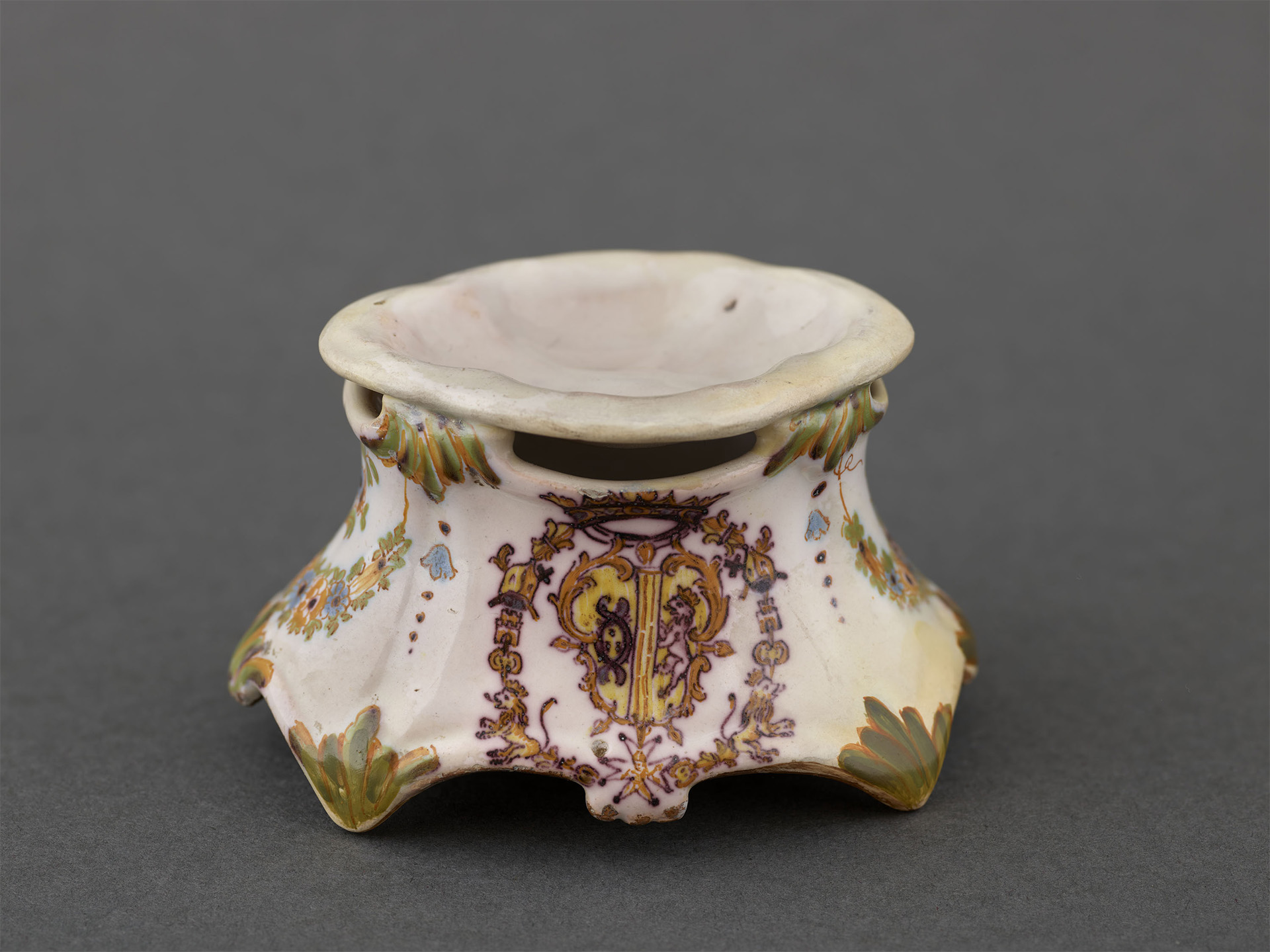
Faïencerie Olérys et Laugier. Moustiers (Francia)
Salt cellar
"À guirlandes et médaillon" decoration (1745-1750)
WORK INFORMATION
Ceramic, polychrome earthenware, height: 5 cm
Moustiers is a small village in the mountains of the French Prealps which became famous thanks to a dynasty of potter-painters, the Clérissy family. In 1677, Pierre Clérissy I (active until 1728), an accomplished earthenware painter, founded a pottery that was continued by his son Antoine (1728-1732) and by Pierre Clérissy II until 1783. The promulgation of various royal edicts at the end of the 17th and beginning of the 18th century favoured the production of pottery in Moustiers. These edicts prohibited the use of gold and silver tableware which, during this period, was sacrificed for the benefit of the State in order to pay for wars, trade with the Orient and excessive court expenses. From then on, tableware made here was successfully marketed to aristocratic families, not only in the south of France, but throughout the country.
One of the artists who stood out among the potters of this town – for his use of polychromy and a new ornamental repertoire in the Rococo style – was Joseph Olérys (1697-1749). This painter, a native of Marseilles who trained in Moustiers, was hired by the 9th Count of Aranda in 1727 when the latter founded the Alcora manufactory, where the artist was employed for ten years. In 1740, Olérys returned to Moustiers and teamed up with his brother-in-law Jean-Baptiste Laugier to set up his own factory there.
This salt cellar with a four-lobed rim, inspired by silver models, is decorated with a border of floral garlands, a classical motif that characterises the work of Joseph Olérys.
The stand is decorated with a floral garland and a coat of arms that does not quite follow the rules of heraldry, engaging in a dynamic that is decorative rather than strictly heraldic. The decoration depicts an Italian cordiform (heart-shaped) split shield. In the shield's left section we see two linked serpents, azure, encasing three unidentifiable objects. The right half of the shield represents a lion rampant purpure crowned with gold. The two central partition posts, gules and gold, do not seem to have a heraldic reading, but are rather a fanciful ornament.
The entire coat of arms is stamped with a crown (seemingly of a marquis) and bordered by what could be the collar of the Order of Saint Januarius, a military and noble order of the Royal House of Bourbon-Two Sicilies.

